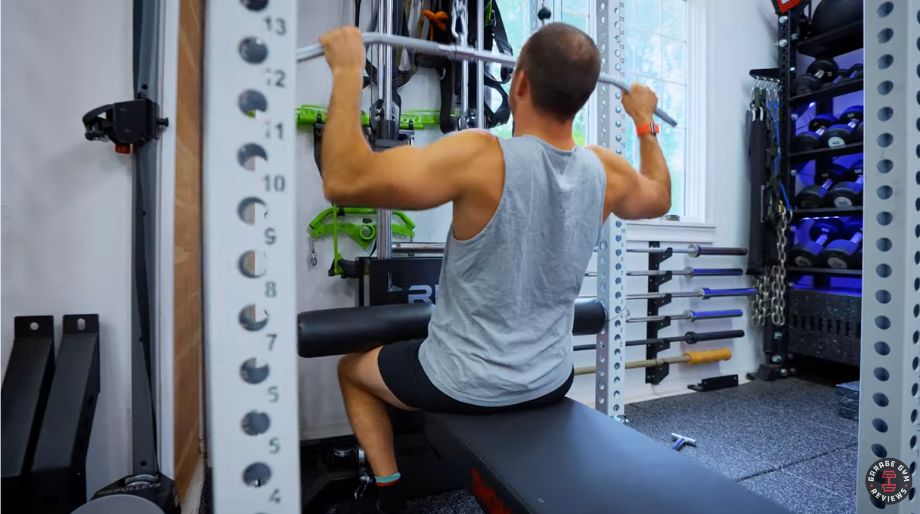We test and review fitness products based on an independent, multi-point methodology. If you use our links to purchase something, we may earn a commission. Read our disclosures.
I love training my chest. And I love training my back. When I first started weight training over 10 years ago, I would train both muscle groups separately because that’s how it’s done in the bodybuilding world. You train the chest with the triceps and the back with the biceps. Duh! But why does it have to be this way?
After two or three years of consistent training, I wanted to try something new. The same workout every session was getting boring. And more importantly, I wanted to reduce my rest times and make my workouts more effective so I could spend time with my friends and family.
Experimenting with a chest and back workout together on the same day was one of the best decisions I’ve made when it comes to strength training. Keep reading and I’ll explain why, as well as give you the exact chest and back workout that I do to build muscle.
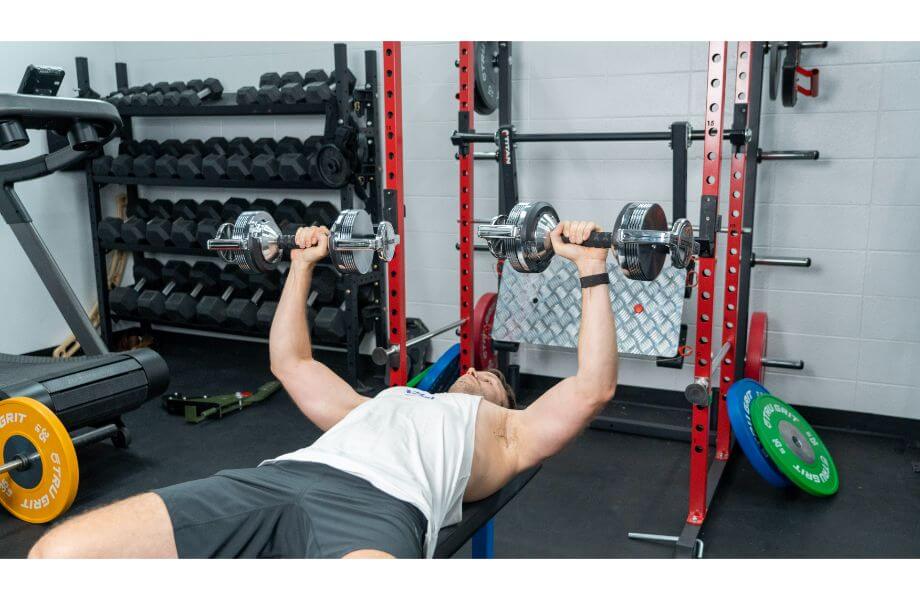
Why Train Chest & Back Together?
Below are three reasons why you should consider training your chest and back together:
- It saves time. Whilst your chest is recovering, you’re training your back muscles (and vice versa). If you train one muscle group at a time, you have to wait for the muscles to recover before the next set. This way you train them back-to-back.
- It can help with muscle growth. If you follow most workout routines, you’ll train your chest and back muscles once per week. With this workout, you’re able to work on both at least twice a week, which could result in more volume. And, increased volume has been proven to lead to muscle growth1.
- It adds variety. Doing the same workout for years on end can leave you feeling frustrated. Instead, mix it up a little and add some spice to your life.
Muscles Used in Chest and Back Workouts
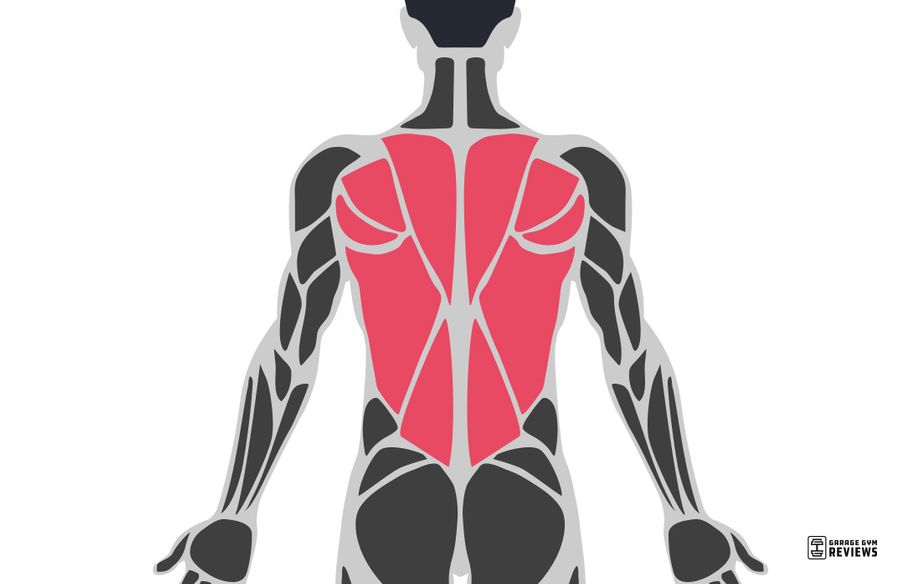
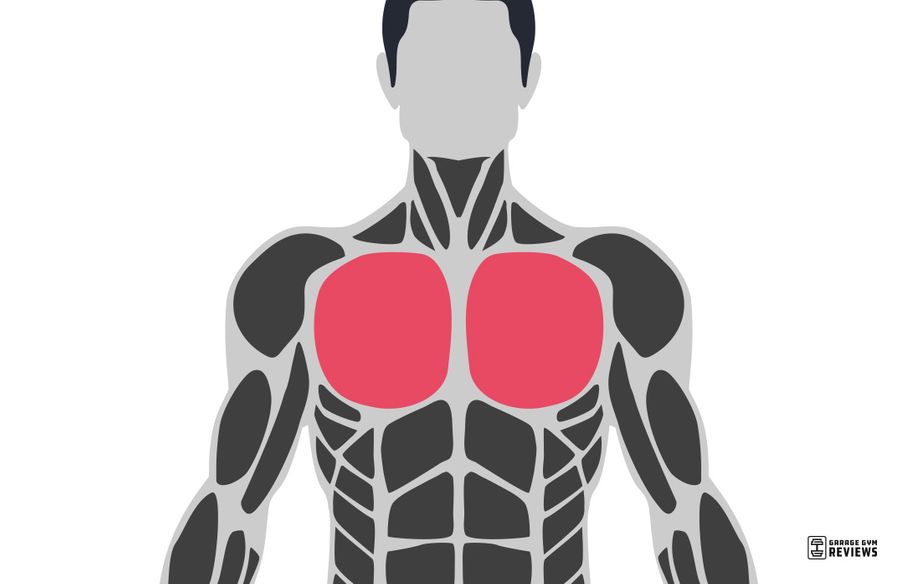
An upper-body chest and back workout use the following muscles:
Pectoralis Major and Minor
The pectoralis major is thick, superficial, and fan-shaped2, whereas the pectoralis minor lies underneath the pectoralis major and is small, flat, and triangular-shaped. They’re two of the four muscles that make up the pectoral muscles.
Latissimus Dorsi:
Also known as “lats,” these are the largest muscle group in the back. They’re broad, flat, and work with the pectoralis major and teres major to move the upper body3. Your lats are located below the shoulder blades.
Upper Back Muscles (Rhomboids, Trapezius, and Teres major)
The trapezius is diamond-shaped and helps to move the shoulder blades (as do the rhomboids)4. The teres major helps to move the shoulders and arms.
Biceps Brachii and Triceps Brachii
True, your biceps and triceps aren’t on your chest or back. But, any chest movement will involve your triceps, and any back exercise will use your biceps.
Muscle-Pumping Chest And Back Workout Routine
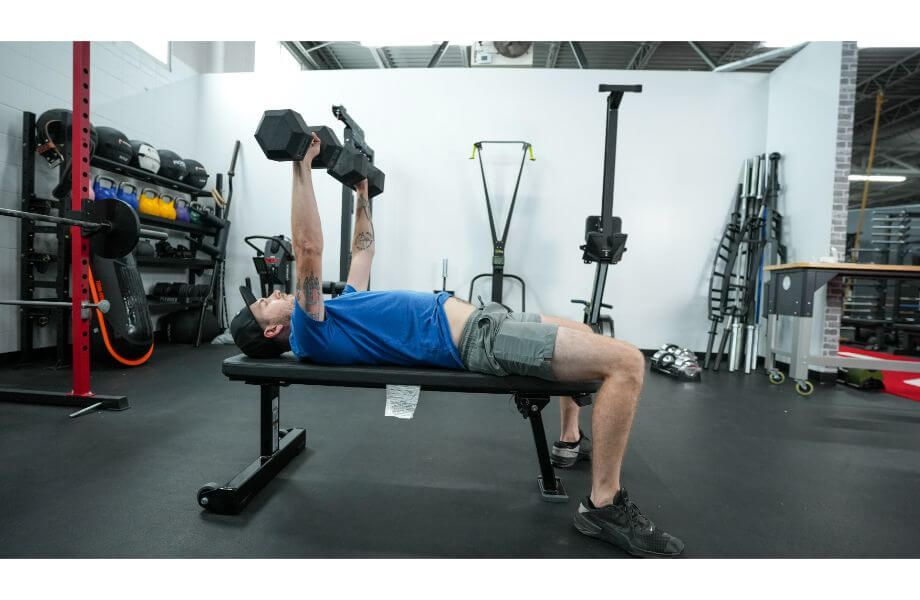
Now that you’re sold on the benefits of a chest and back workout, let’s get into the actual workout I use as well as the set and rep ranges to aim for:
Day 1
Incline barbell bench press: 3 sets of 6 reps
Single-arm dumbbell row: 3 sets of 8 reps
Dips superset with lat pulldowns: 4 sets of 8 reps
Standing cable flyes superset with seated cable rows: 3 sets of 12 reps
Day 2
Pull-ups: 3 sets of 6 reps
Flat dumbbell bench press: 4 sets of 8 reps
T-bar rows superset with push-ups: 3 sets of 10 reps
Dumbbell incline flyes superset with straight-arm pulldowns: 3 sets of 12 reps
Trainer Tips
Before we go into how to do each exercise, here are some helpful tips so you can get the most out of your chest and back workout:
Warm Up First
Before any workout, including this chest and back workout, warm up. Spend five or 10 minutes on the treadmill or cross-trainer, and do some stretching, too. Before a heavy dumbbell or barbell lift, do warm-up sets on a machine or lighter sets on that specific piece of equipment (don’t just go straight into your heaviest weight).
Form Is Key
I’m all about lifting heavy, but not to the point where your ego gets the better of you and you’re at risk of injuring yourself. I’ve been there, and even though you think you’re doing the right thing to build muscle, you’re not.
Avoid Lower Back Exercises on Chest and Back Day
Even though it’s back day, there are no lower back exercises such as deadlifts included in this workout. This is intentional because I find that including deadlifts in a workout that already involves a lot of effort is too taxing for the body as it puts an enormous load on your core, hamstrings, and back. Instead, train deadlifts on a separate day or as part of your leg or lower-body workout.
Add More Exercises
This workout is based on you doing a chest and back workout two times per week. If you can only do one session a week, consider adding some more exercises.
Best Chest And Back Exercises To Try
In order to get maximum gains and prevent injury, you’ll want to make sure that you’re doing each exercise correctly. Here’s how:
Incline Barbell Bench Press
Why Do It: The bench press is a compound exercise and is known as the king (or queen) of chest exercises. It recruits many different muscle groups to move the bar, including the pectoralis major and minor, the triceps brachii, and the anterior deltoid.
How to Do It:
- Lie back on the incline bench with the bar parallel to your eyes and your feet flat on the floor.
- Place your hands slightly wider than shoulder-width apart on the barbell (make sure you grip the bar firmly too!).
- Breathe in and engage your core.
- Lift the barbell off the rack and slowly bring it down to your chest.
- Push the bar back to the starting position slowly whilst engaging your chest muscles.
- Repeat the process for the desired number of reps. Then, place the barbell back onto the rack.
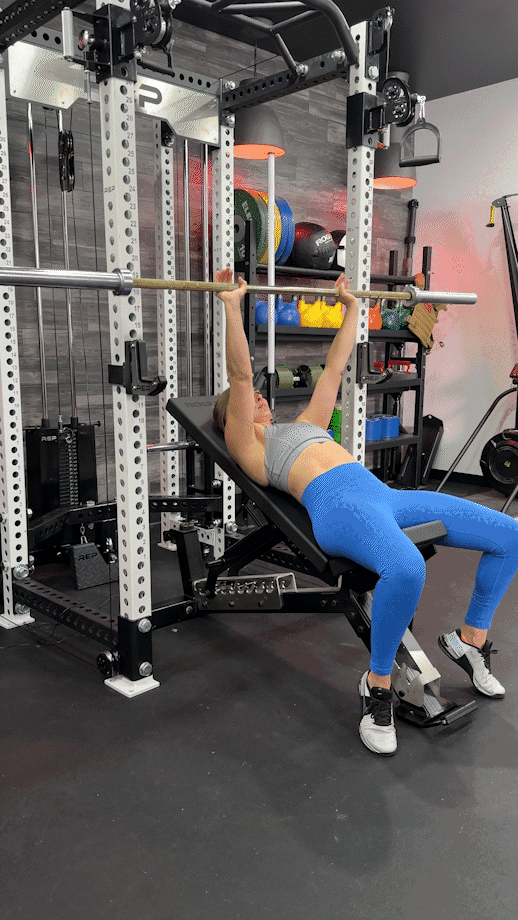
Single-Arm Dumbbell Row
Why Do It: It targets most of your back muscles (but especially your rhomboids and latissimus dorsi), as well as your core. And because you’re doing one side at a time, you’ll be able to strengthen and correct muscle imbalances.
How to Do It:
- Place your left knee and left hand on a bench, adding some of your body weight to stabilize yourself.
- With your right hand, pick up the dumbbell.
- Your right leg should be facing forward with a slight bend in the knee. This will result in a bend in your torso, usually between a 45-degree angle and a 90-degree angle.
- Hang the dumbbell in your right hand and then pull it up toward your right hip in a slow and controlled motion. Then, bring it down.
- Repeat until you’ve done the number of reps you’d like, and then switch hands.
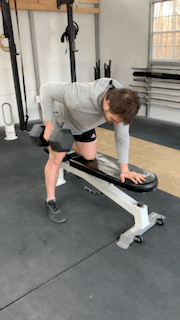
Dips
Why Do It: Not only do dips help to build muscle in the chest and triceps, but they also work your shoulders and back. They can improve your lifts in other exercises, such as the bench press, overhead press, rows, pull-ups, and more.
How to Do It:
- Step onto the parallel bars, or grab a pair of gymnastics rings, and hold them with your palms facing each other.
- Lean forward slightly (so that your chest muscles are activated).
- With your arms straight, bend your legs behind you so the weight is on your arms.
- Whilst looking downwards, lower your arms until your elbows are at a 90-degree angle (use a mirror to help if you have one).
- Straighten your arms, pushing back to reach the original position.
- Keep going until you’ve reached your reps, and then step back onto the parallel bars. If this is too easy for you, consider adding a dumbbell between your legs or using a weighted vest.
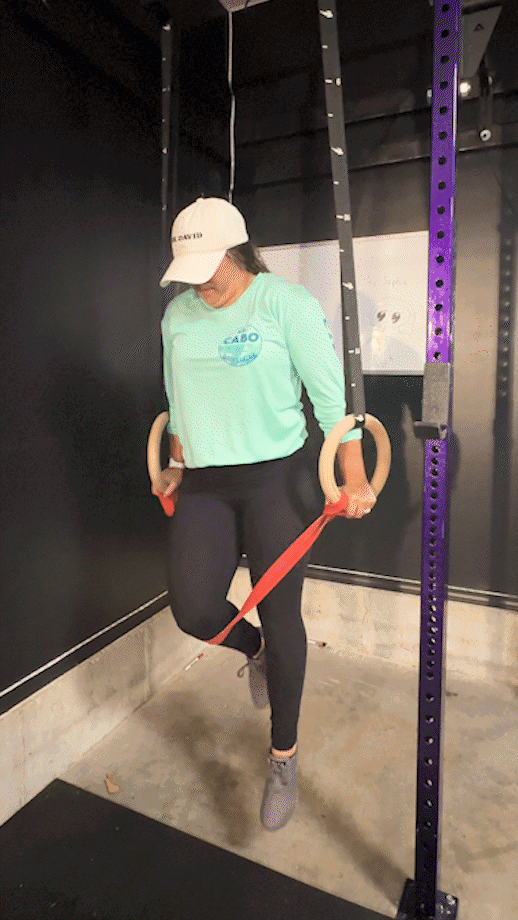
Lat Pulldowns
Why Do It: Lat pulldowns strengthen the latissimus dorsi and the biceps brachii. They help to build a wider back and can assist in exercises such as the pull-up (which you’ll see later).
How to Do It:
- Place your hands on the lat pulldown attachment with an overhand grip (slightly wider than shoulder-width).
- Sit down on the seat.
- Lean back slightly, and bring down the attachment to your upper chest area. It’s important to try not to use your biceps here but focusing on bringing the attachment down with your lats.
- Slowly bring the attachment back up, and continue until you’ve hit your rep range.
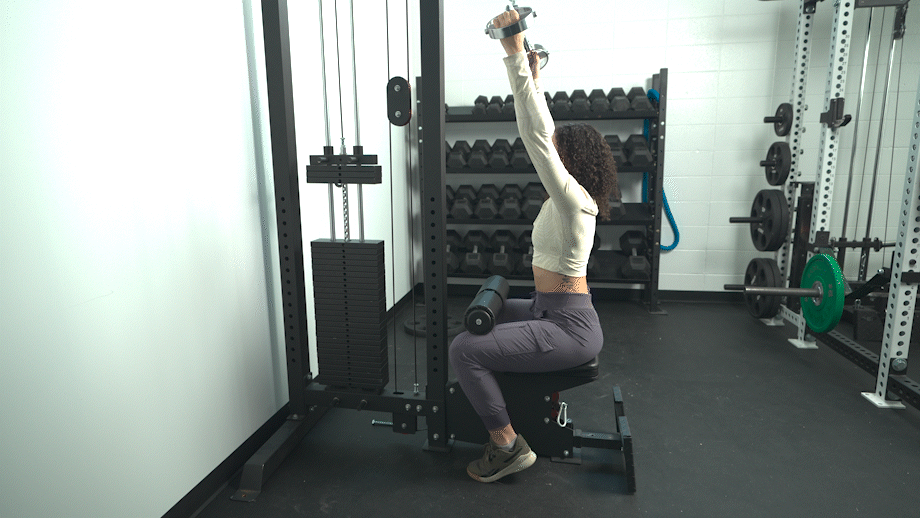
Standing Cable Flyes
Why Do It: It’s an accessory movement that helps to build muscle mass in the chest muscles and front deltoids. They aren’t as tough on your joints as a chest press using barbells or dumbbells but still give you that chest pump.
How to Do It:
- Set the cable machine to the position you want it to be in on both sides (you can start from a high, medium, or low position).
- Attach handles to each side and select the desired weight.
- Take hold of both handles, step forward, and push the handles forward until they meet in front of your body at the pecs region.
- Slowly bring the handles to their original position.
- Repeat for the desired number of reps.
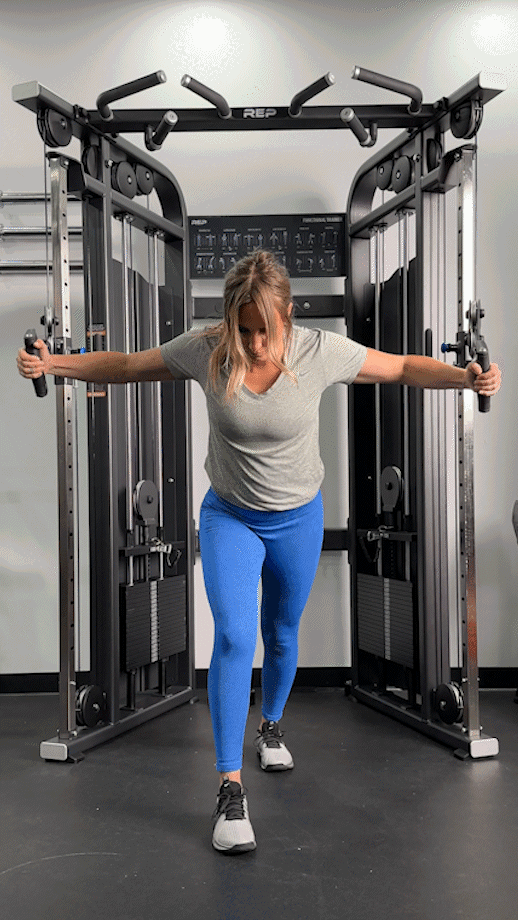
Seated Cable Rows
Why Do It: Seated cable rows are an isolation exercise that works the latissimus dorsi, trapezius, and rear deltoids. Because it uses a cable machine, there’s increased stability as you’re pulling in a fixed range of motion (this helps to prevent injury).
How to Do It:
- Sit down on the machine with your feet on the pads and a slight bend in your knees.
- With your body upright and your chest sticking out, take a hold of the attachment (a narrow handle is the most common).
- Pull the handle towards your lower abdomen area whilst squeezing your shoulder blades You should feel this in your trapezius.
- Pause for a split second then return the handle to the original position by leaning forward and straightening your arms.
- Repeat.
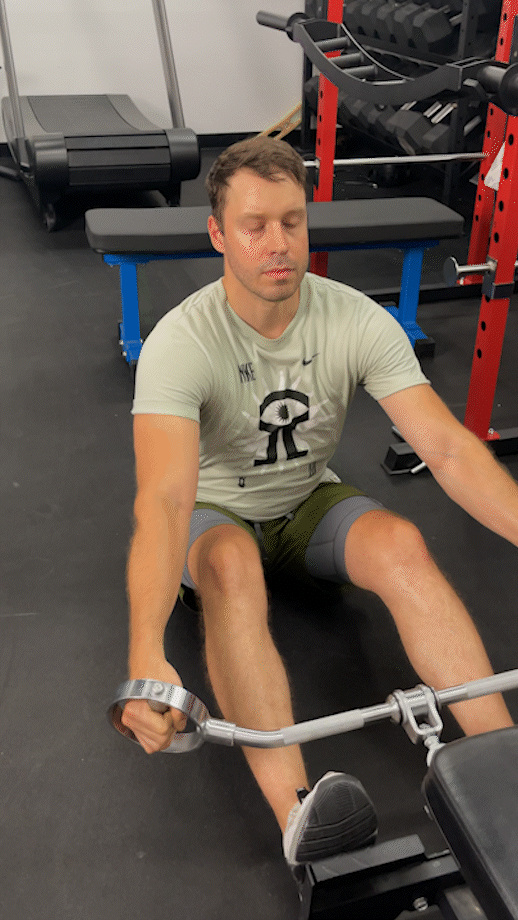
Pull-ups
Why Do It: You’ll work multiple muscles, including the trapezius, rhomboids, latissimus dorsi, and biceps brachii. We also like that pull-ups improve grip strength. There are tons of variations so you can challenge yourself whatever your level.
How to Do It:
- Step onto the pull-up bar and take hold of the handles with a wide grip (more than shoulder-width). Your palms should be facing away from you.
- Take your feet off so that you’re in the dead hang position.
- Whilst keeping your chest up and looking upwards at the bar, pull yourself up.
- Pause for a moment, then lower yourself down until you’re back to the start.
- Pull until you’ve reached the desired rep range and then step off the pull-up bar.

Dumbbell Bench Press
Why Do It: The dumbbell bench press uses nearly every muscle in your upper body. Because you’re holding a separate weight in each hand, it can fix imbalances and strengthen the stabilizer muscles around your shoulder.
How to Do It:
- Sit down on a flat bench with the dumbbells resting on your quadriceps.
- Lie back and at the same time, place the dumbbells in their starting position (your hands should be slightly outside of your body by the chest region).
- Press both dumbbells up at the same time until your arms are extended fully and the weights are over your body.
- Lower the dumbbells back to the starting position and repeat until you’ve finished your reps.
- Come off the weight bench in the opposite order that you came onto it (don’t just drop the dumbbells onto the floor!).
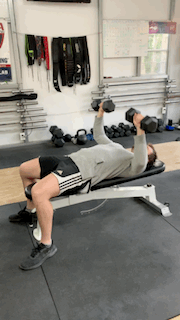
T-bar Rows
Why Do It: It works the upper back muscles and may contribute to a thicker back. Make sure you do it with a full range of motion if you want to maximize gains.
How to Do It:
- With the bar in between your legs, lean forward, and take hold of the attachment with an overhand grip. (You can also do this like a landmine row if you don’t have a t-bar attachment.)
- Put your chest up and pull the bar towards your body (for most people this will be around the lower chest region).
- Pause at the top, lower until your arms are fully extended, then repeat.
- If you don’t have the equipment for a T-bar row, you can do a bent-over row or a barbell row instead.
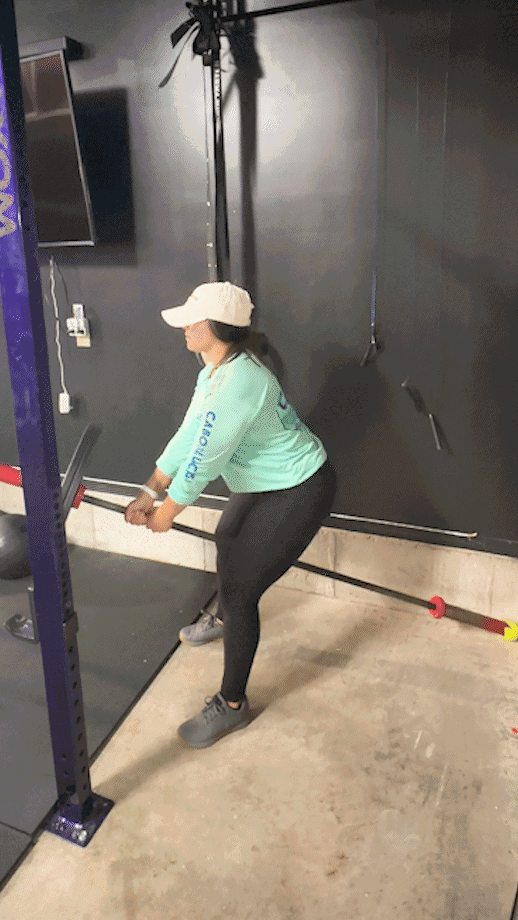
Push-ups
Why Do It: It’s a functional bodyweight exercise that can be done anywhere without any equipment. Push-ups work the pectoralis major and minor, deltoids, and triceps brachii. We like how many different types there are too so you’ll never get bored.
How to Do It:
- Get into the plank position with your hands slightly wider than shoulder-width apart.
- Breathe in and engage your core.
- Lower your body by bending your elbows, and go as deep down as possible (ideally, your chest should touch the floor).
- Push (hence the name!) yourself back up until your arms are straight.
- Keep going until you’re done.
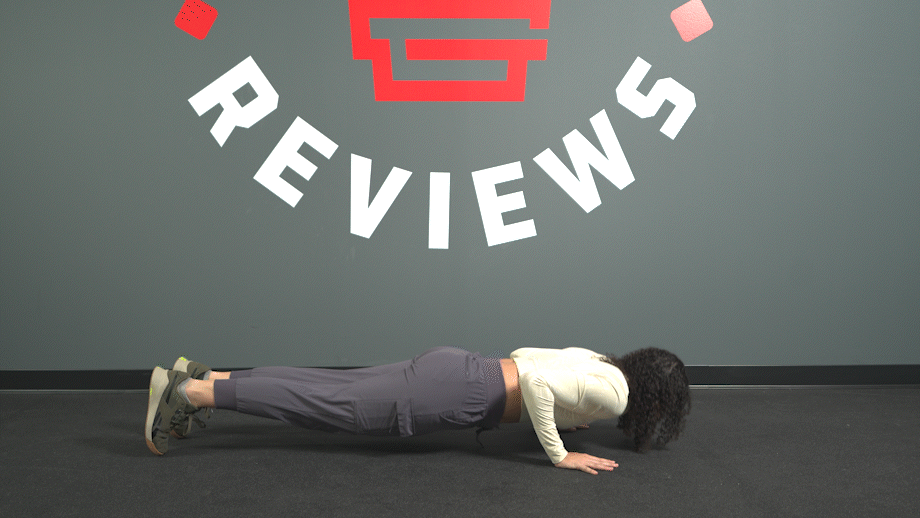
Dumbbell Flyes
Why Do It: They help to grow your chest muscles and improve your posture. The key here is to start light and activate your chest muscles. Going too heavy can cause injury.
How to Do It:
- You can do these on a flat bench, or adjust the bench so that it’s at a 30 to 45-degree angle.
- Lie down on the bench with the dumbbells in their starting position (your arms should be straight up and the dumbbells over your body).
- Lower the dumbbells out to the side, ensuring that there’s a slight bend in your elbows.
- Reverse the motion, engaging the pectoralis major, bringing the dumbbells to their starting position over your body.
- Repeat.
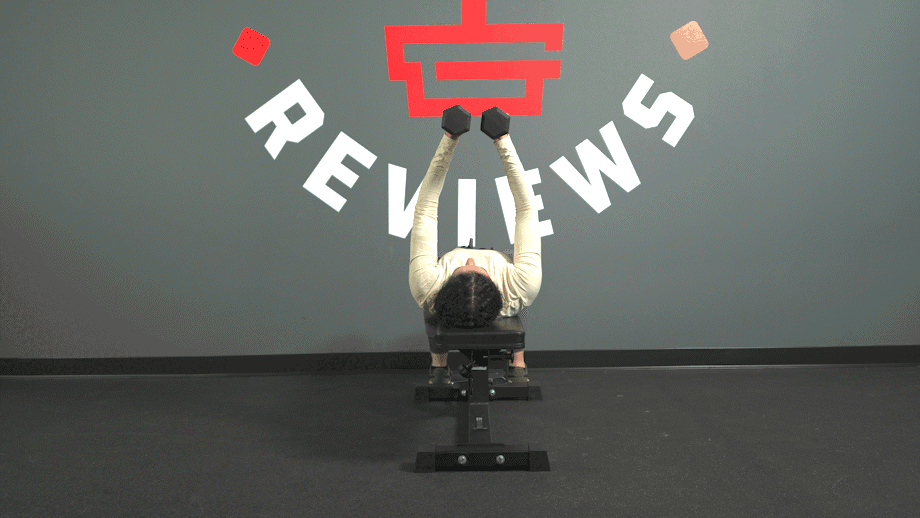
Straight-arm Pulldowns
Why Do It: You’re pulling in a fixed range of motion, which can help prevent injury. But the main reason we like straight-arm pulldowns is that they isolate your lats which some other back exercises don’t.
How to Do It:
- Grab a straight or slightly curved bar on a cable machine with an overhand grip. The cable should be placed in a high position.
- With your arms straight, push the bar down in front of you (try only to use your lats here).
- Return the bar to the top position.
- Repeat the process for the desired number of reps.
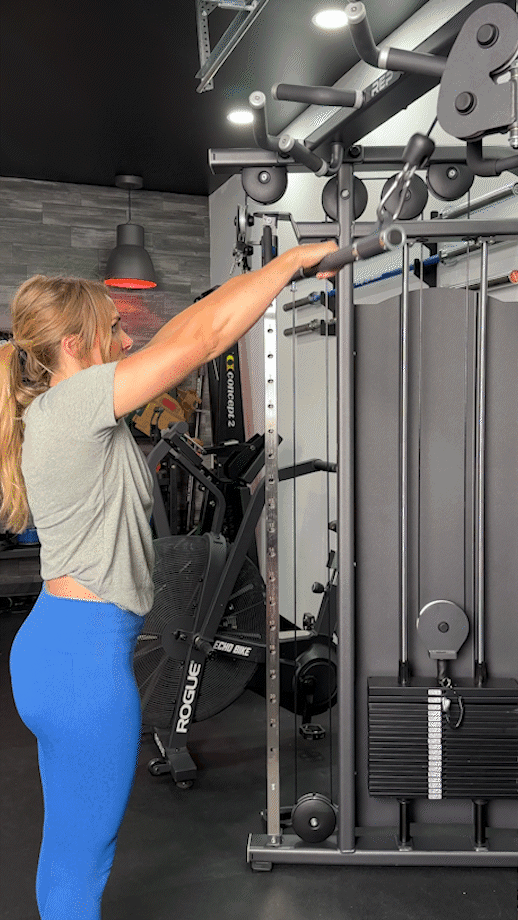
Chest and Back Workout: Q&A
Is it good to work out chest and back together?
Working chest and back together can be a good upper body workout. It’s a common training split amongst lifters and usually means that you’ll work out both muscle groups more than once per week. Because your chest and back muscles are opposing muscle groups, you can work on one whilst the other is resting (i.e. perform supersets).
How should I structure a chest and back day?
The structure of your chest and back day depends on which muscle group you want to work more, if any. If you want a focused chest workout, do more chest exercises, or at least consider starting with these. For a back-focused workout, do more back exercises. However, most people will want both to be even in their training program and so it should be structured that way.
It usually makes sense to start with compound exercises first because these require more effort. You can do isolation exercises later when you’re feeling tired.
How many exercises should you do for chest and back days?
On a typical chest and back day, you’ll want to do a total of between five and eight exercises. If you prefer doing fewer sets or repetitions for each exercise, do more total exercises. Otherwise, around six exercises are ideal. If you can only train the chest and back day once per week, aim for around seven or eight exercises in your workout routine.
Should you do chest or back exercises first?
You should do the more difficult exercise first because you’ll have more energy to perform all your reps. For example, if you have a bench press and dumbbell row on the same day you’d do the chest exercise first.
References
- Schoenfeld BJ, Ogborn D, Krieger JW. Dose-response relationship between weekly resistance training volume and increases in muscle mass: A systematic review and meta-analysis. J Sports Sci. 2017 Jun;35(11):1073-1082. doi: 10.1080/02640414.2016.1210197. Epub 2016 Jul 19. PMID: 27433992.
- Baig MA, Bordoni B. Anatomy, Shoulder and Upper Limb, Pectoral Muscles. [Updated 2022 Aug 30]. In: StatPearls [Internet]. Treasure Island (FL): StatPearls Publishing; 2023 Jan-. Available from: https://www.ncbi.nlm.nih.gov/books/NBK545241/
- Jeno SH, Varacallo M. Anatomy, Back, Latissimus Dorsi. [Updated 2022 Apr 5]. In: StatPearls [Internet]. Treasure Island (FL): StatPearls Publishing; 2022 Jan-. Available from: https://www.ncbi.nlm.nih.gov/books/NBK448120/
- Modes RJ, Lafci Fahrioglu S. Anatomy, Back. [Updated 2023 Feb 27]. In: StatPearls [Internet]. Treasure Island (FL): StatPearls Publishing; 2023 Jan-. Available from: https://www.ncbi.nlm.nih.gov/books/NBK539746/
Further reading

Pre-workouts can do more than just give you energy; check out our list of the best pre-workout for focus in a variety of categories! Read more

I love training my chest. And I love training my back. When I first started weight training over 10 years ago, I would train both muscle groups separately because that’s how it’s done in the bodybuilding world. You train the chest with the triceps and the back with the biceps. Duh! But why does it have to be this way?After two or three years of consistent training, I wanted to try something new. » Read more about: The Ultimate Guide To Chest and Back Workout for Upper Body Strength » Read more

The best folding exercise bikes are easy to store and transport, have adjustable seats and pedals, and multiple levels of resistance. Read more

Is the super greens powder from Live It Up worth it? The GGR nutrition experts cover everything you need to know in our Live It Up Super Greens review! Read more

